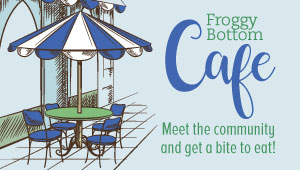
Sao Paulo, Brazil a woman fills up with alcohol made from sugar cane. Credits: Ron Giling
"The ethanol industry in Brazil began in earnest in 1975 when Brazil’s military leader, General Ernesto Geisel ordered that the country’s gasoline supply be mixed with 10% ethanol. Over the next five years, the country steadily raised that level to 25%." By James Ronald Skains, The Piney Woods Journal
"Brazil launched its Pro-Ethanol Program in 1976 with subsidies for mills to produce ethanol on a commercial scale, with the expressed purpose of reducing Brazil’s dependence on oil imports after the first oil shock in the early 1970s." Source: Reuters, February 3, 2006, By Inae Riveras
"Brazil’s Ministry of Treasury published the change last December. Under the new schedule, anhydrous ethanol prices will be deregulated May 1, 1997, and hydrated ethanol will be removed from government control May 1, 1998, said Plinio Nastari, president of DATAGRO, a Sao Paulo-based ethanol consulting firm." Source: Oxy-Fuel News, 2/3/97
There is BOLD leadership at the end. Read on.
Brazil ended its ethanol subsidies in the mid 1990s. Even with subsidies gone the price of ethanol today is about half that of gasoline, according to David Morris in his article The Future of Ethanol, published April 17, 2005 by the Star Tribune (Minneapolis, MN).
"Brazil has the world’s most developed bio-fuels market in the world. Today 30,000 filling stations across the country sell ethanol fuel distilled from sugar cane." Source: Reuters, February 3, 2006, By Inae Riveras
Brazilian ethanol is about three times cheaper than U.S. ethanol, according to a May 18, 2004 publication of the Peoria Journal Star (IL).
"Brazilian producers burn cellulosic stalk of sugar cane to make energy that fuels the entire industrial process. "That is why our production costs are half that of corn,"" says Eduardo Pereira de Carvalho, head of the Sao Paulo Sugarcane Agroindustry Union. By Kelly Hearn, 15 Dec 2005, Grist Magazine
"The fuel substitutes for 204,000 barrels of gasoline equivalent a day, or roughly 41 percent of all gasoline sold nationally, which also includes a 20 to 25 percent ethanol blend. Seven out of every 10 new cars in Brazil are now flex-fuel vehicles which can run on gasoline or ethanol or any mixture of the two." Source: Reuters, February 3, 2006, By Inae Riveras
How can we do better than Brazil here.
1. Require that all new gasoline vehicles sold in the US be flexible fuel vehicles by the year 2010. The increased cost to manufacture each vehicle as a flexible fuel vehicle will only be about $100 dollars per vehicle.
2. Require all gasoline sold in the US to have at least 10% Ethanol blended in before sale and increase it by 1% every other year for 10 years staring in 2010. 15% Ethanol blend will not damage gasoline automobiles and by that time all, all gasoline cars will be ten years old or older.
3. Require that at least 1 pump at every gasoline station that has more than one grade of gasoline be devoted to selling a blend of Ethanol and gasoline that is 85% Ethanol, by the year 2010.
4. Subsidize Ethanol so that the price is competitive with gasoline, however, lower subsidies by 10% a year starting in 2015, completely phasing out the subsidy by the year 2025.




